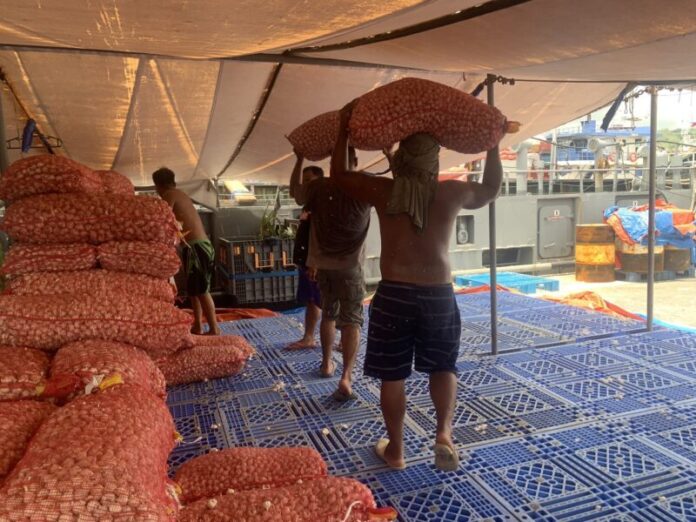
-
The Department of Agriculture is eyeing the construction of deep piers to accommodate large ships
-
This would help consolidate shipments and cut the logistics cost of farm inputs, according to Agriculture assistant secretary Arnel de Mesa
The Department of Agriculture (DA) is eyeing the construction of deep piers to accommodate large ships and help cut the logistics cost for farm inputs.
DA assistant secretary Arnel de Mesa in a recent news forum said the plan will lead to reduced prices of agricultural products and boost the country’s ability to compete with Southeast Asian neighbors in rice production.
De Mesa noted that the cost of producing a kilo of rice in Vietnam is P6 while in the Philippines it is P12 to P14.
“Mahal din iyong input sa atin dahil iyong logistics, iyong binabanggit palagi ni Secretary (Francisco) Tiu Laurel (Jr.) iyong fertilizer na dadalhin ng Mindoro manggagaling pa iyon ng Bataan, so bago makarating iyong fertilizer from Bataan to Mindoro na nakailang lipat iyong trucking ang laki ng gastos,” De Mesa said.
“So, kung mayroon tayong deep na pier – iyong malalim na pier, ang tawag nila nga doon ay panamax ba – malakihan, puwedeng doon na dalhin directly iyong barko, magdaong mas malaki iyong matitipid – bababa about P15 to P20 immediately iyong presyo ng inputs,” he added.
(The cost of inputs is high because of logistics. Secretary [Francisco] Tiu Laurel [Jr] always gives as an example fertilizer headed for Mindoro which comes from Bataan. Before the shipment reaches its destination, it has been transferred multiple times on trucks.
(But if we have a deep pier, which can accommodate big vessels such as the panamax class, the big vessel can go that pier [consolidating the shipments] and this will immediately bring down the cost of input by P15 to P20.)
Panamax ships have a capacity of above 3,000 twenty-foot equivalent units with a beam below 33.2 meters and are the largest size vessels that can transit the old locks of the Panama Canal, a major shipping route. Such ships require deep draft to be able to dock at ports. Many ships plying the domestic trade have a capacity of less than 1,000 TEUs.
Tiu Laurel earlier said improving post-harvest facilities to boost yield and enhance logistics in the farm sector are among the key measures to reduce the cost of agricultural products.
Last year, President Ferdinand Marcos, Jr. approved the Department of Trade and Industry’s three-year food logistics action agenda aimed at transforming the country’s food distribution system, reducing transport and logistics costs, and ensuring food supply chain efficiency.
The agenda contains six strategies, including revolutionizing the Philippines’ food distribution system from farm to port; reducing transport and logistics costs; increasing investments in logistics infrastructure for transportation and storage; addressing other supply chain gaps; heightening enforcement measures against hoarding, smuggling, and overstaying food imports, monitoring warehouses or cold storage facilities; and using information and communications technology to improve logistics performance from streamlining and automation of government permits and licenses to integration of systems within the logistics ecosystem.




